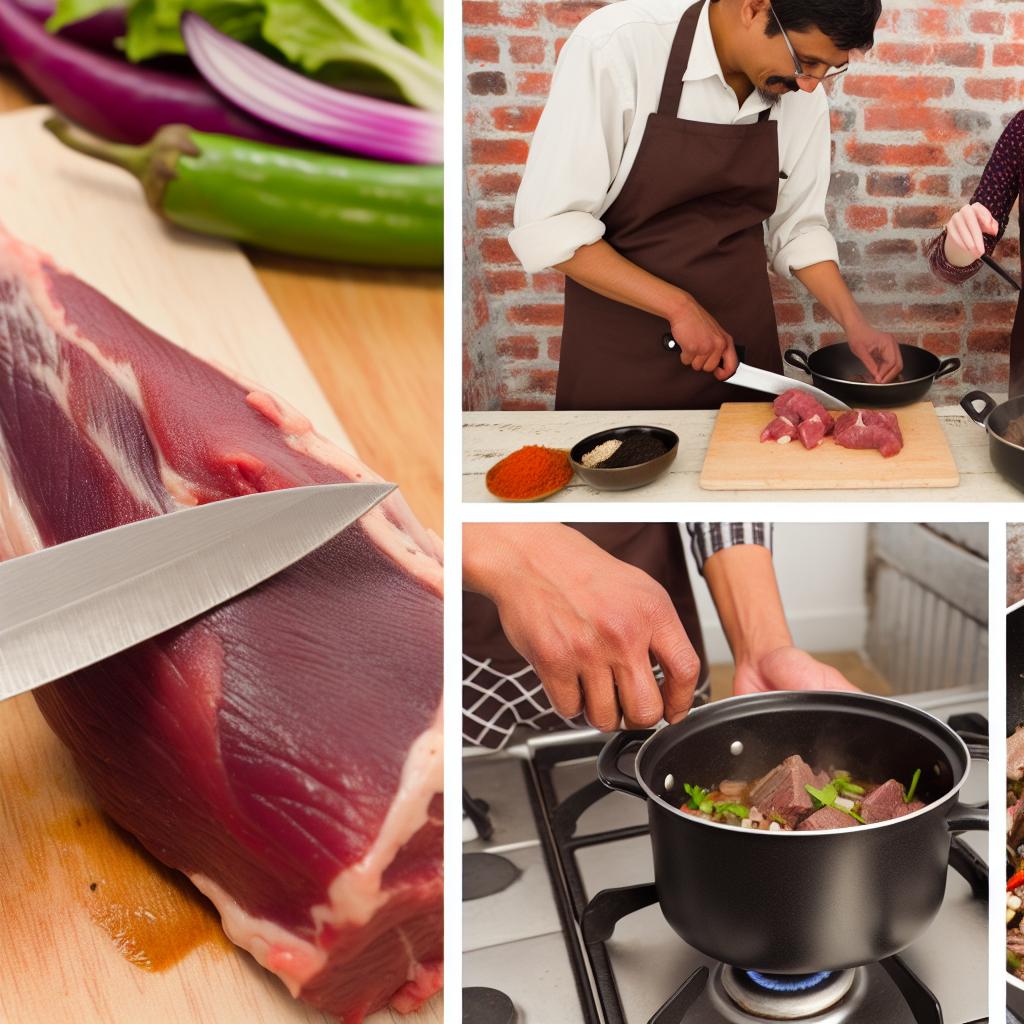
How to prepare kangaroo meat.
Introduction to Kangaroo Meat
Kangaroo meat has emerged as a culinary preference for many who seek to expand their dietary protein repertoire. As people become more health-conscious and environmentally aware, this lean and nutritious meat has garnered attention as a healthier alternative to more conventional meats like beef or pork. In this exploration of kangaroo meat, we’ll delve into its benefits, selection tips, and preparation methods that bring out its best attributes.
Nutritional Benefits
One of the primary reasons kangaroo meat has gained popularity is its host of nutritional benefits. With a remarkably low fat content of around 1-2%, it’s ideal for those monitoring their fat intake. Additionally, kangaroo meat is abundant in iron and zinc—minerals crucial for maintaining robust bodily functions, such as carrying oxygen in the blood and supporting the immune system, respectively. Furthermore, it contains a variety of essential B vitamins that help convert food into energy, assist with red blood cell production, and support brain health. The challenge, however, lies in preparing this lean meat correctly to avoid it becoming tough.
Selecting the Right Cut
To truly appreciate kangaroo meat, selecting the appropriate cut is essential. Among the widely available cuts are fillets, steaks, and minced meat, each lending itself to unique culinary applications. Fillets and steaks are particularly suited for grilling or pan-frying, offering a succulent texture and a robust flavor profile when cooked appropriately. On the other hand, minced kangaroo meat provides versatility, suitable for making hearty burgers or tasty meatballs. Each cut requires a nuanced approach to preparation, ensuring that the resulting dish is both flavorful and tender.
Preparation Tips
Achieving the best texture and flavor in kangaroo meat hinges on proper preparation techniques:
Marinating: While optional, marinating can significantly enhance the flavor and tenderness of kangaroo meat. A well-balanced marinade consisting of olive oil, garlic, herbs, and a touch of acidity (from vinegar or citrus) is recommended. Allow the meat to soak for at least an hour to infuse these flavors deeper into the meat fibers.
Seasoning: The natural flavors of kangaroo meat can shine with the right amount of seasoning. A simple combination of salt and pepper suffices, ensuring that the meat’s inherent taste isn’t overpowered.
Cooking Techniques: Given its leanness, kangaroo meat needs to be cooked swiftly over high heat. This approach prevents moisture loss and keeps the meat tender and juicy.
Cooking Methods
Understanding how to effectively cook kangaroo meat can unlock its potential as a delectable component in varied dishes:
Grilling: Grilling is perhaps one of the most popular methods for cooking kangaroo steaks. Preheat the grill to a high setting and cook the meat for approximately 2-3 minutes per side to achieve a medium-rare finish. This short cooking time coupled with high heat helps seal in juices, ensuring a rich taste. Allow the meat to rest for a few minutes before serving, a step crucial in maintaining its juiciness and distributing the heat evenly throughout the cut.
Pan-Frying: Another favored method is pan-frying, using a hot, lightly oiled pan. As with grilling, maintaining a high temperature and a short cooking duration of 2-3 minutes per side is ideal. Allowing the meat to rest post-cooking ensures its flavors are locked inside.
Slow Cooking: While kangaroo meat typically benefits from rapid cooking techniques, there are exceptions. Tougher cuts like shanks or tails may break down more pleasingly when subjected to slow cooking methods. Incorporating these cuts into stews or casseroles allows the flavors to meld and intensify over time, resulting in a tender and flavorful dish.
Serving Suggestions
Kangaroo meat’s versatility allows it to pair wonderfully with a myriad of complementary flavors, enhancing the dining experience. Here are some suggestions for serving:
Vegetables: Kangaroo meat pair nicely with vegetables due to its robust taste. Consider options like grilled asparagus or roasted root vegetables. These accompaniments provide a textural contrast and round out the meal with their natural sweetness and earthiness.
Sauces: To further elevate the dish, consider serving it with a well-crafted sauce. A reduction made with red wine offers a rich and velvety accompaniment that marries well with kangaroo’s distinctive flavor. Alternatively, a balsamic glaze provides a sweet and tangy contrast, adding depth to each bite.
In conclusion, kangaroo meat stands out as a sustainable, nutritious, and versatile alternative to traditional meat sources. Its unique texture and flavor can be fully realized with proper selection, preparation, and cooking techniques. For those intrigued by novel culinary adventures or seeking healthier dietary options, kangaroo meat is certainly worth exploring further. A range of recipes and preparation tips are readily accessible for those eager to incorporate this meat into their meals. To explore more about kangaroo meat recipes, visit this resource for additional ideas.





